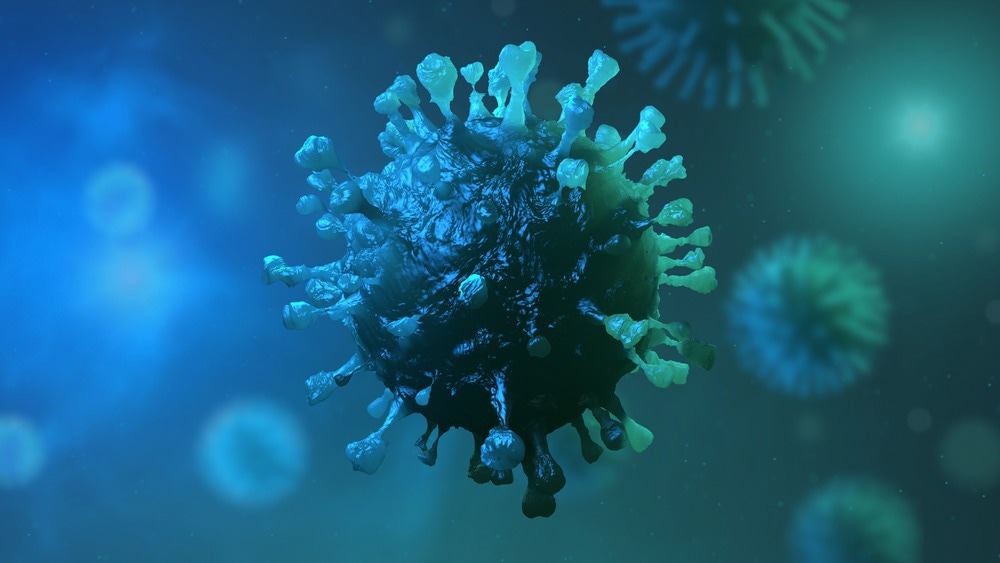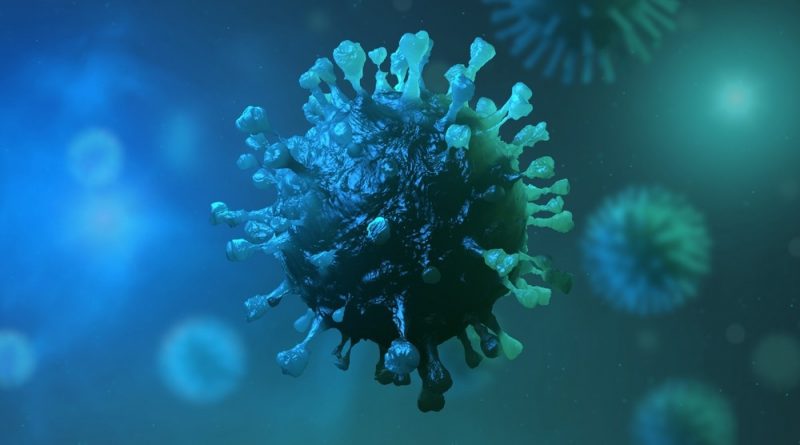Chitin-immobilized nanobodies for SARS-CoV-2 detection
In a recent study posted to bioRxiv*, researchers demonstrated a novel strategy to detect severe acute respiratory syndrome coronavirus 2 (SARS-CoV-2) using chitin-immobilized nanobodies.

Background
Shark and Camelidae-derived nanobodies are emergent alternatives to traditional antibodies. Nanobodies bind to ligands at the nanomolar range and remain stable under heat/chemical-induced stress conditions, making them promising candidates for widespread antigen testing. Numerous anti-SARS-CoV-2 nanobodies have been engineered via phage display or by immunization of llamas, sharks, and alpacas.
The microbial form of Ustilago maydis (corn smut fungus) can be leveraged for synthesizing heterologous proteins such as nanobodies. Recently, the authors established a proof-of-principle for the synthesis of anti-SARS-CoV-2 nanobodies. Moreover, the unconventional secretion mechanism used by U. maydis to export the chitinase Cts1 can be leveraged for the secretion of heterologous target proteins. Cts1 has chitin-binding activity and thus can be exploited as an intrinsic immobilization and purification tag. Jps1, the anchoring factor required for Cts1 secretion, can be an alternative carrier.
The study and findings
In the present study, researchers established a novel approach to detect SARS-CoV-2 using chitin-immobilized nanobodies. First, they screened different nanobody-Cts1 fusion proteins for expression, unconventional secretion, and binding activity against the SARS-CoV-2 spike’s receptor-binding domain (RBD). Four nanobody-Cts1 fusion constructs were synthesized using two llama-derived nanobodies (VHHE and VHHV) and two synthetic nanobodies (Sy15 and Sy68).
In addition, a bivalent nanobody was generated by pairing VHHV with VHHE to yield the VHHVE nanobody. Moreover, the bivalent VHHEE nanobody was produced to test the binding ability of dimers. The published nanobody versions Sy68/15-Jps1 and Sy68/15-Cts1 were controls. Expression/secretion of target fusion proteins was examined via western blots.
Culture supernatants showed sufficient secretion of Sy15-Cts1, VHHV-Cts1, VHHE-Cts1, Sy68/15-Jps1, and VHHEE-Cts1 fusion proteins. RBD binding activity was assessed using direct enzyme-linked immunosorbent assay (ELISA) of cell extracts containing nanobody-Cts1 fusion proteins. VHHEE-Cts1 and Sy68/15-Jps1 showed the strongest binding to RBD, whereas VHHE-Cts1 exhibited about half the signal intensity. The remaining fusion proteins lacked clear binding activity.
Further, these three fusion proteins were purified and evaluated in a direct ELISA against full-length SARS-CoV-2 S1 protein. All three fusion proteins showed significant binding activity; VHHEE-Cts1 and Sy68/15-Jps1 had two-fold increased binding compared to VHHE-Cts1. The researchers performed adjusted neutralization assays to determine whether in vitro activity translated to in vivo binding or neutralization.
Lab Diagnostics & Automation eBook

VHHE-Cts1 lacked neutralizing activity, while VHHEE-Cts1 and Sy68/15-Jps1 exhibited virus-neutralizing activity. Since Cts1 can bind to chitin-coated surfaces such as chitin magnetic beads, this characteristic could be leveraged to develop a novel antigen-testing strategy. Chitin binding was recapitulated on chitin beads using purified recombinant Cts1. Chitin beads were mixed with recombinant Cts1, which confirmed the binding of the recombinant protein to chitin.
β-glucuronidase (Gus)-Cts1 fusion protein was used to quantify results. The Gus-Jps1 fusion protein, which was anticipated not to bind chitin, served as the negative control. Chitin beads were coated with Gus-Cts1 or Gus-Jps1 fusion proteins. Only the Gus-Cts1 fusion protein was bound to chitin beads, corroborating the binding ability of N-terminal Cts1 fusion proteins.
Quantifying signal intensities revealed that 44% of the recombinant Cts1 protein and 68% of the Gus-Cts1 fusion protein were captured on the bead. The functionality of the fusion protein after immobilization (on beads) was assessed. Specifically, Gus activity was detected on beads incubated with cell extracts containing Gus-Cts1, implying functional (enzymatic) activity retention despite immobilization on beads.
Finally, sandwich immunosorbent assays were performed on ELISA plates and chitin beads to evaluate the capability of VHHEE-Cts1 and VHHE-Cts1 nanobody fusion proteins. Sy68/15-Jps1 was the control in both assays, given that it should show activity in ELISA but not on chitin beads. Purified fusion proteins were coated on ELISA plates, incubated with serially diluted recombinant RBD, and detected by an anti-RBD antibody and a cognate horseradish peroxidase (HRP) conjugate.
While all three nanobody fusion proteins could capture RBD in ELISA plates, only Sy68/15-Jps1 and VHHEE-Cts1 showed volumetric activity for serial dilutions of RBD. VHHEE-Cts1 exhibited the strongest binding event at the lowest concentration of RBD. Chitin beads were separately incubated with the three nanobody fusion proteins and mixed with RBD. Both VHHEE-Cts1 and VHHE-Cts1 retained binding activity, whereas Sy68/15-Jps1 lacked activity on chitin beads. Like earlier findings, VHHEE-Cts1 showed two-fold more potent activity than VHHE-Cts1.
The RBD-capturing ability of this chitin-based detection system was further characterized by determining the volumetric binding activity using the most potent nanobody fusion protein (VHHEE-Cts1). Chitin beads were loaded with VHHEE-Cts1 and incubated with serially diluted recombinant RBD. The activity was detected with a commercial antibody sandwich. The researchers observed a colorimetric reaction within two minutes, with its intensity proportional to RBD concentrations.
Conclusions
To summarize, the study achieved Cts1-mediated secretion of mono- and bivalent nanobodies against SARS-CoV-2. It provided a proof-of-principle for a SARS-CoV-2 antigen test based on chitin, facilitated by the unconventional secretion mechanism of Cts1 in U. maydis. The authors verified the applicability of nanobody-Cts1 fusion proteins in virus detection and neutralization in vivo. This confirmed that the nanobody could bind to the infectious virus, besides the spike RBD. The authors believe this strategy could be transformed into a lab-on-a-chip method for SARS-CoV-2 antigen testing.
*Important notice
bioRxiv publishes preliminary scientific reports that are not peer-reviewed and, therefore, should not be regarded as conclusive, guide clinical practice/health-related behavior, or treated as established information.
- Philipp, M. et al. (2022) "Efficient SARS-CoV-2 detection utilizing chitin-immobilized nanobodies synthesized inUstilago maydis". bioRxiv. doi: 10.1101/2022.11.11.516239. https://www.biorxiv.org/content/10.1101/2022.11.11.516239v1
Posted in: Medical Science News | Medical Research News | Disease/Infection News
Tags: Antibodies, Antibody, Antigen, Assay, Cell, CHIP, Coronavirus, Coronavirus Disease COVID-19, ELISA, Enzyme, heat, Immunization, in vitro, in vivo, Lab-on-a-Chip, Magnetic Beads, Nanobodies, Protein, Receptor, Respiratory, SARS, SARS-CoV-2, Severe Acute Respiratory, Severe Acute Respiratory Syndrome, Stress, Syndrome, Virus

Written by
Tarun Sai Lomte
Tarun is a writer based in Hyderabad, India. He has a Master’s degree in Biotechnology from the University of Hyderabad and is enthusiastic about scientific research. He enjoys reading research papers and literature reviews and is passionate about writing.
Source: Read Full Article



